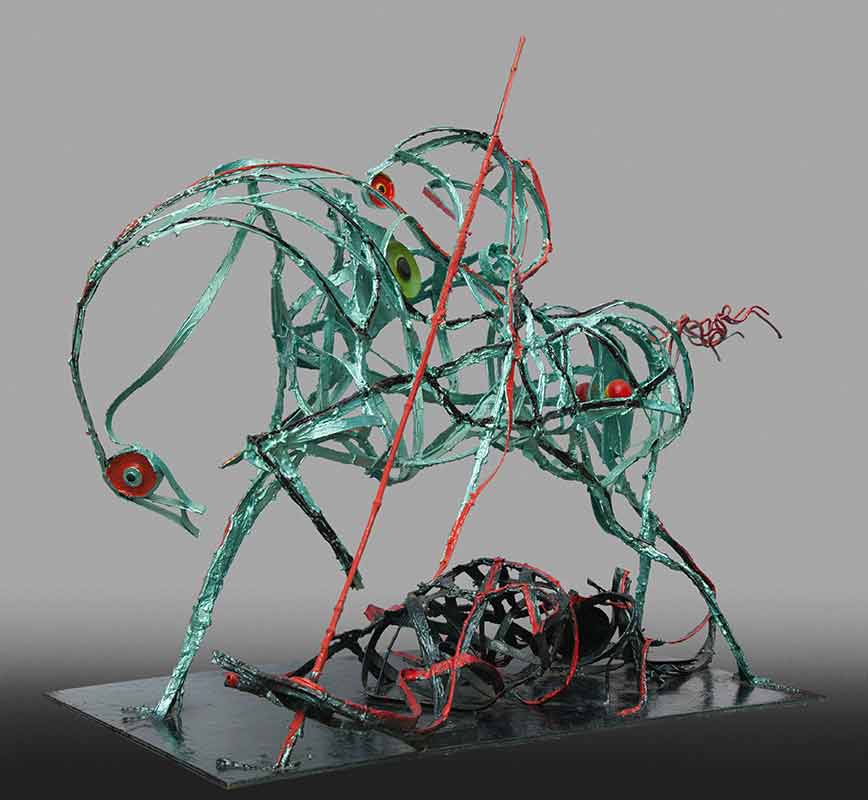
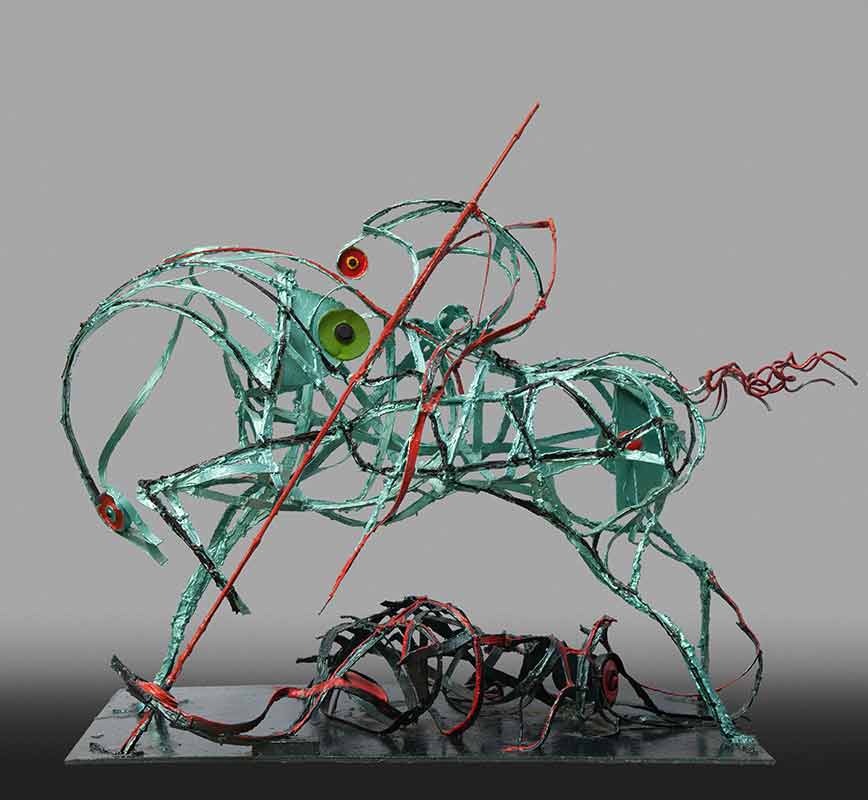
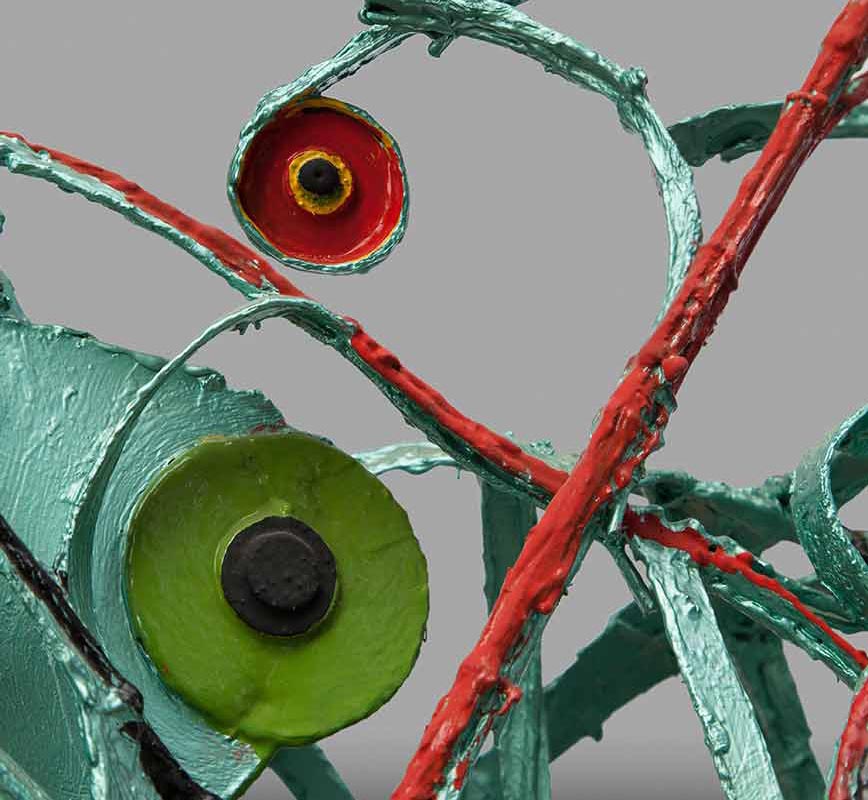
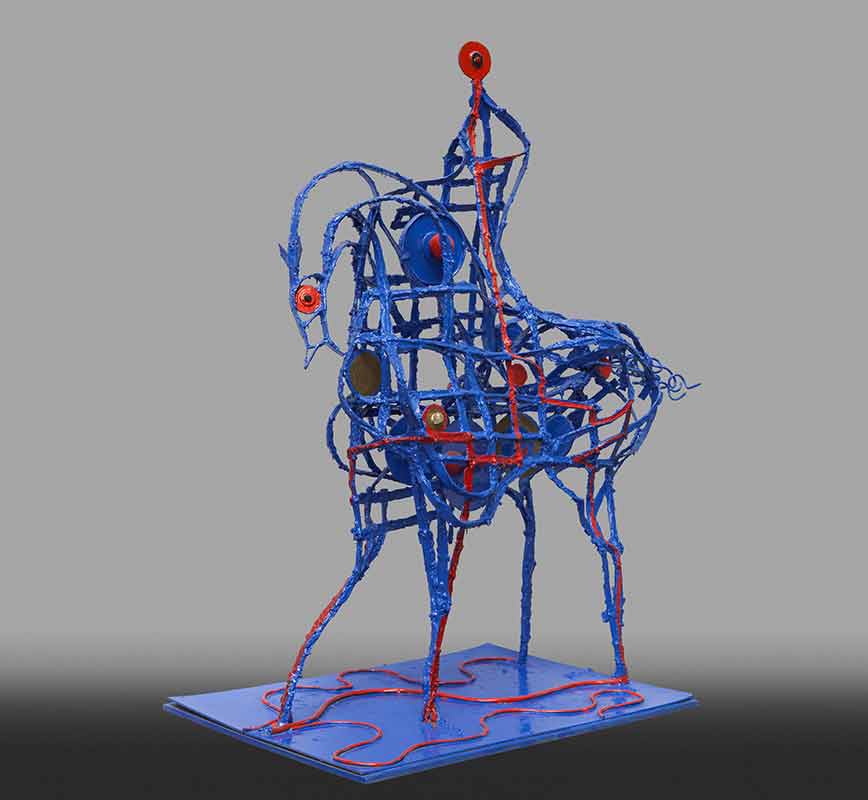
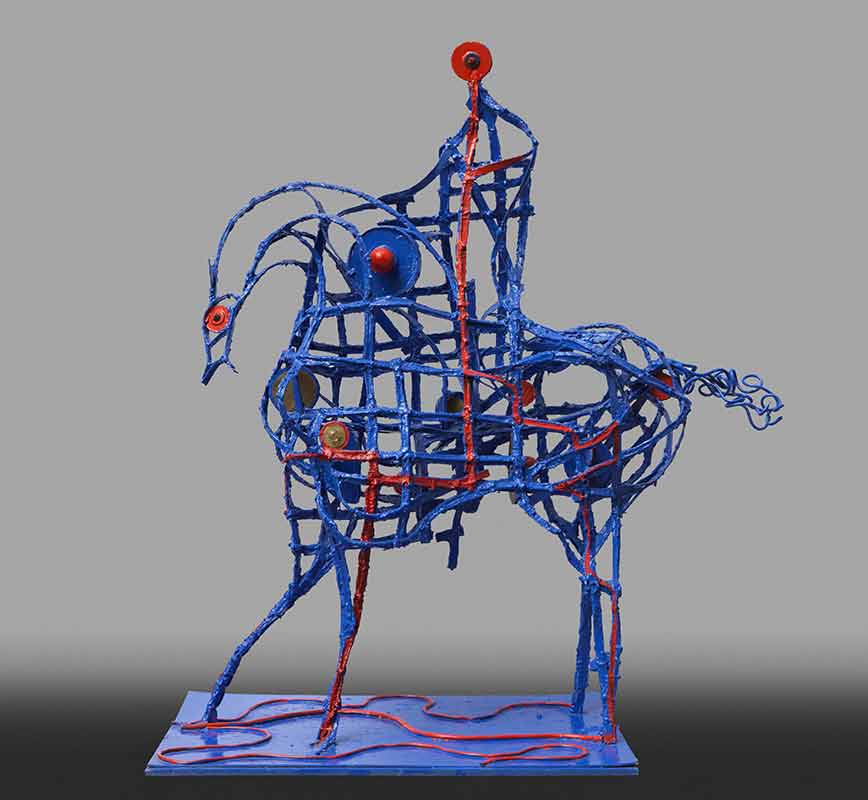
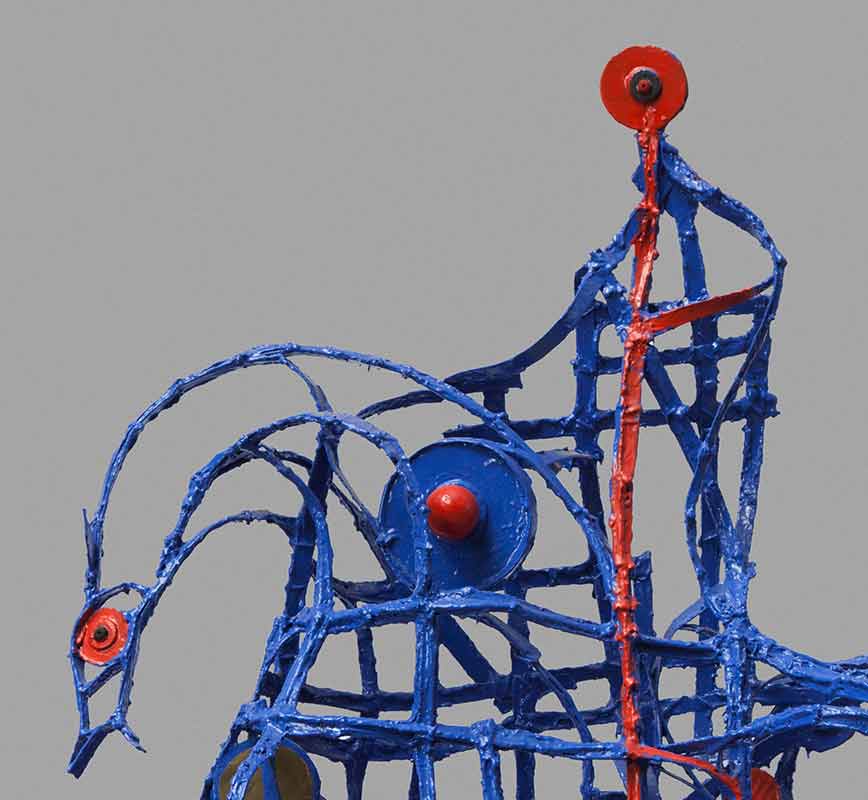
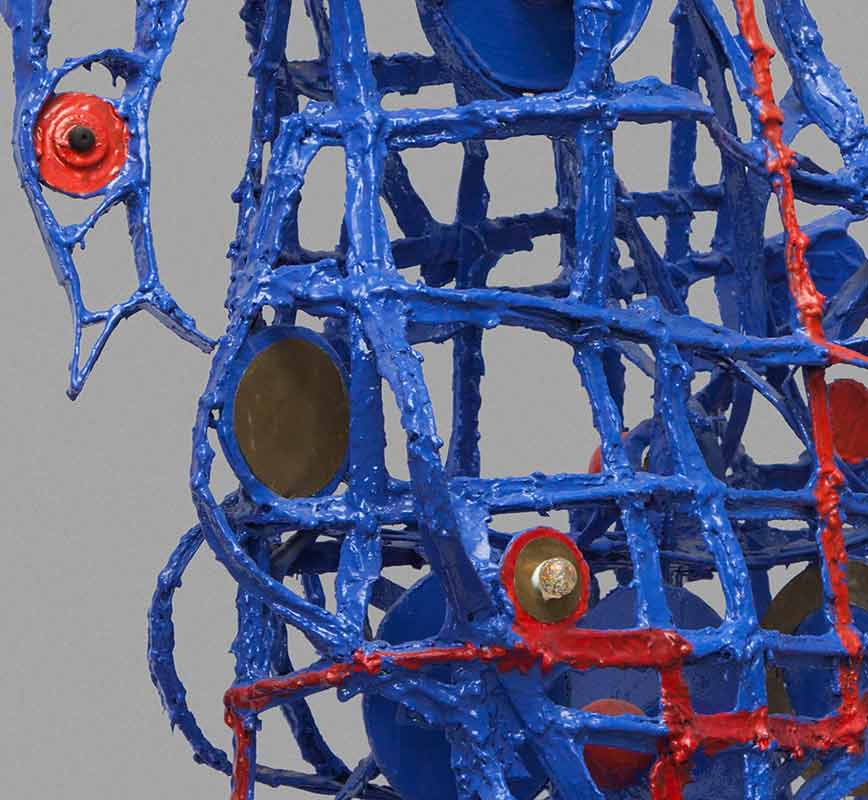
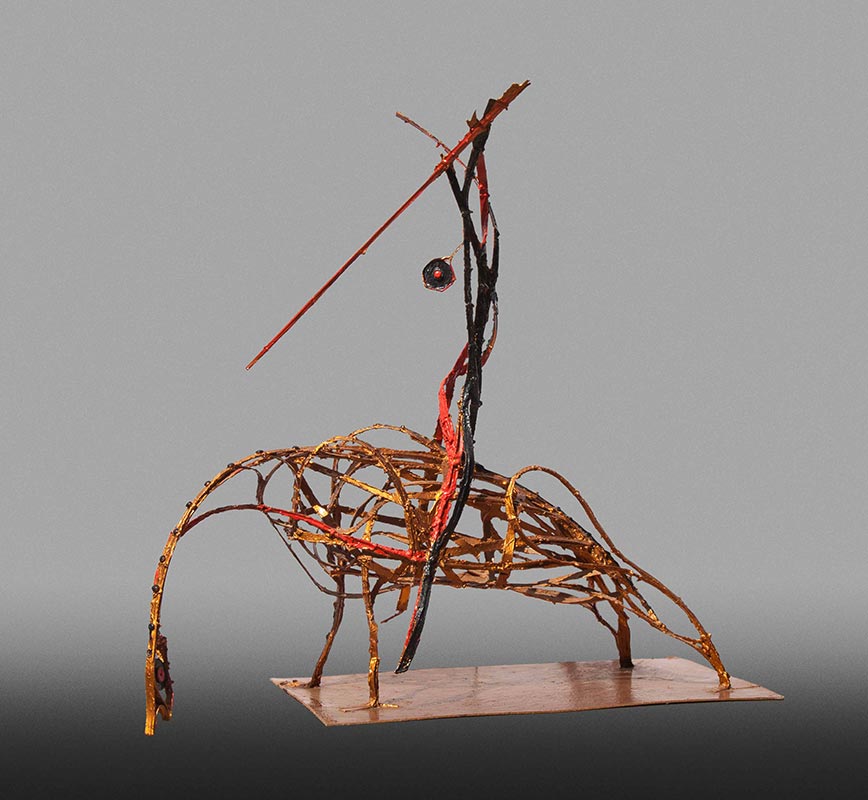
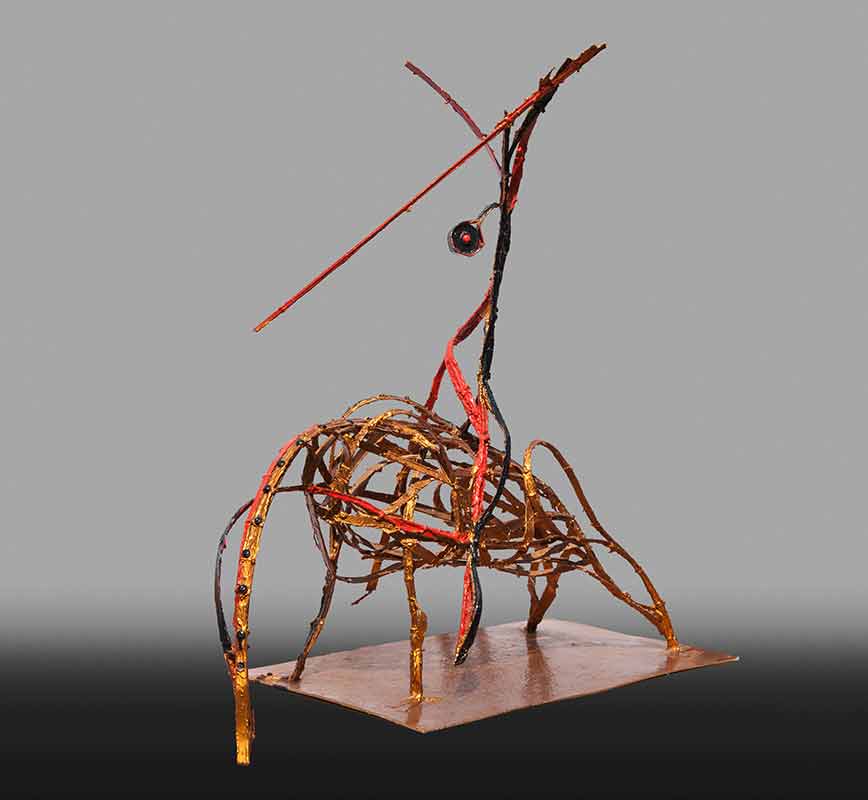
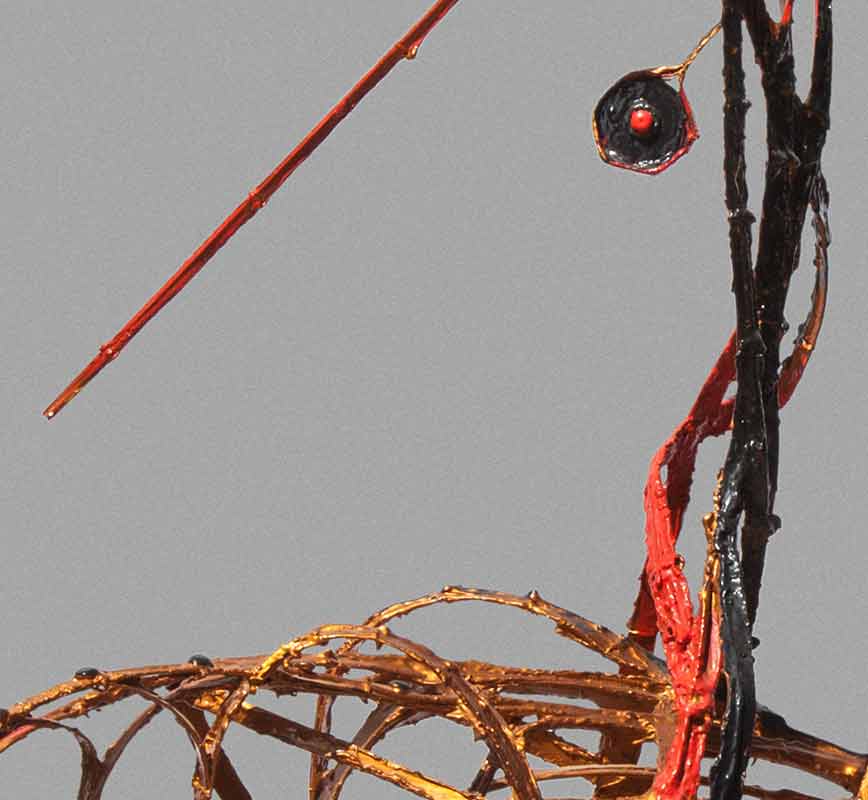
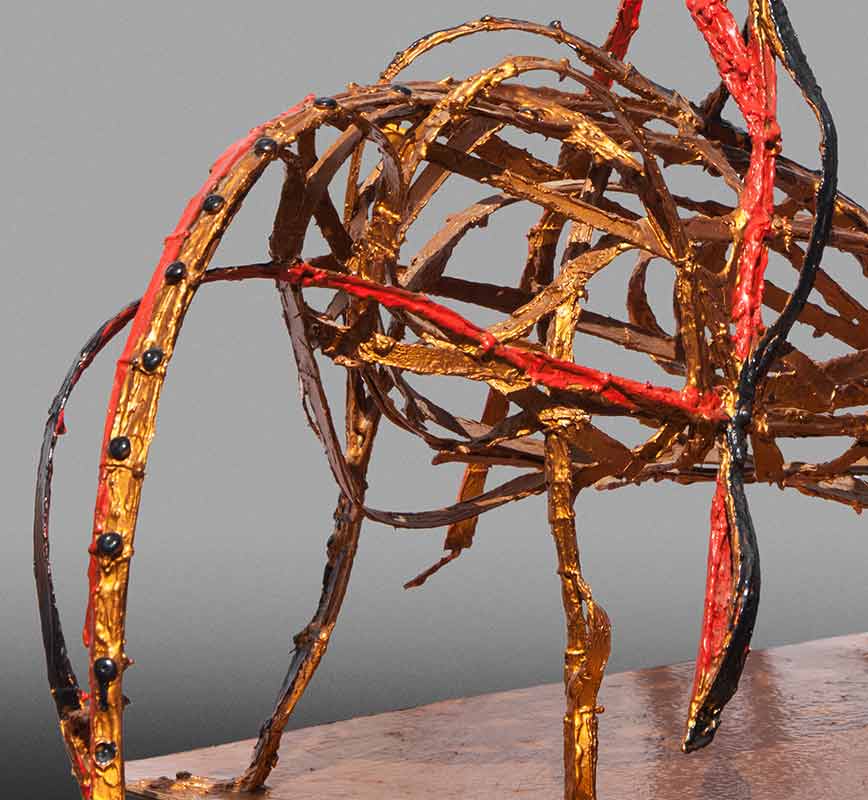
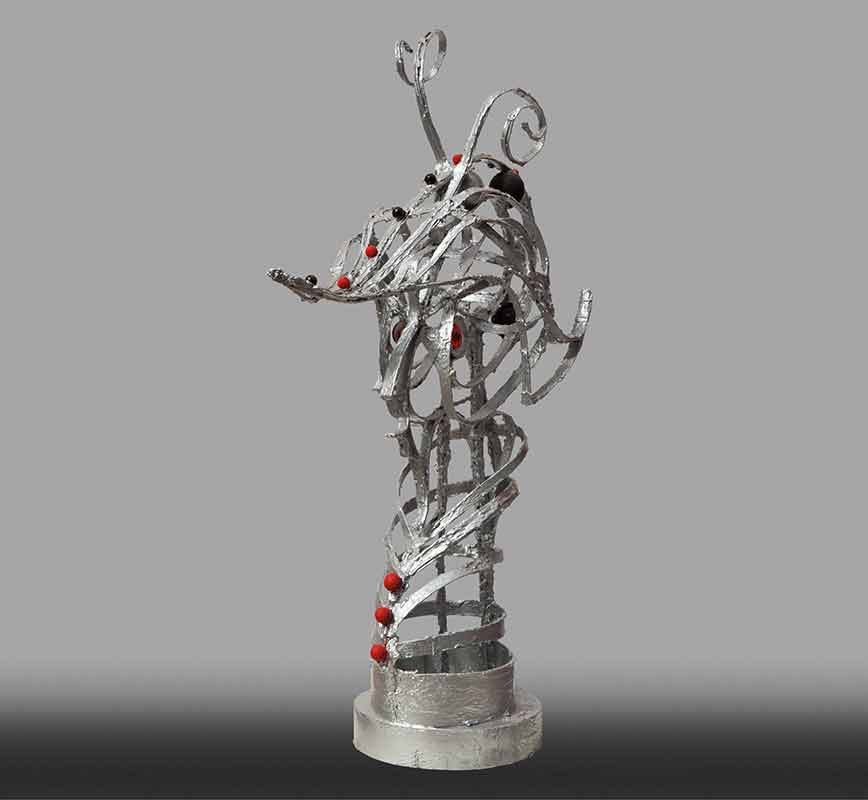
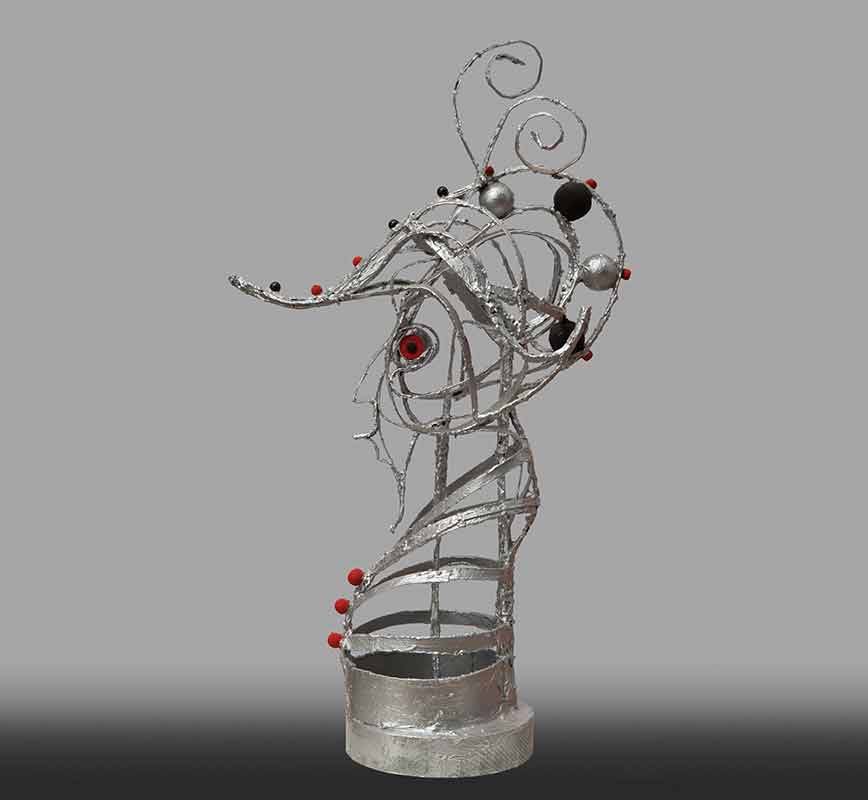
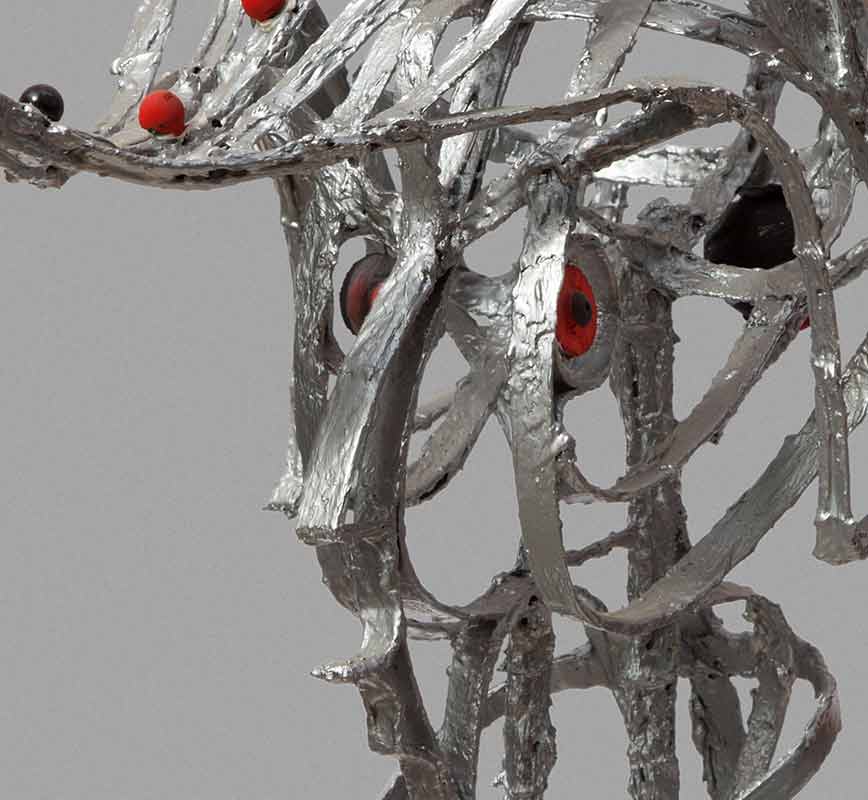
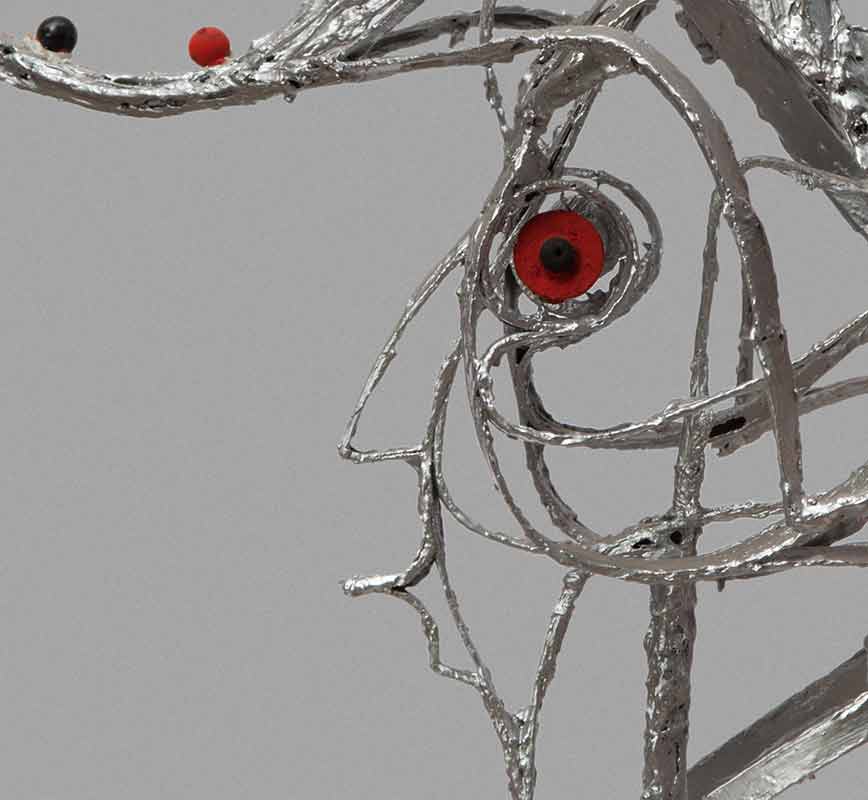
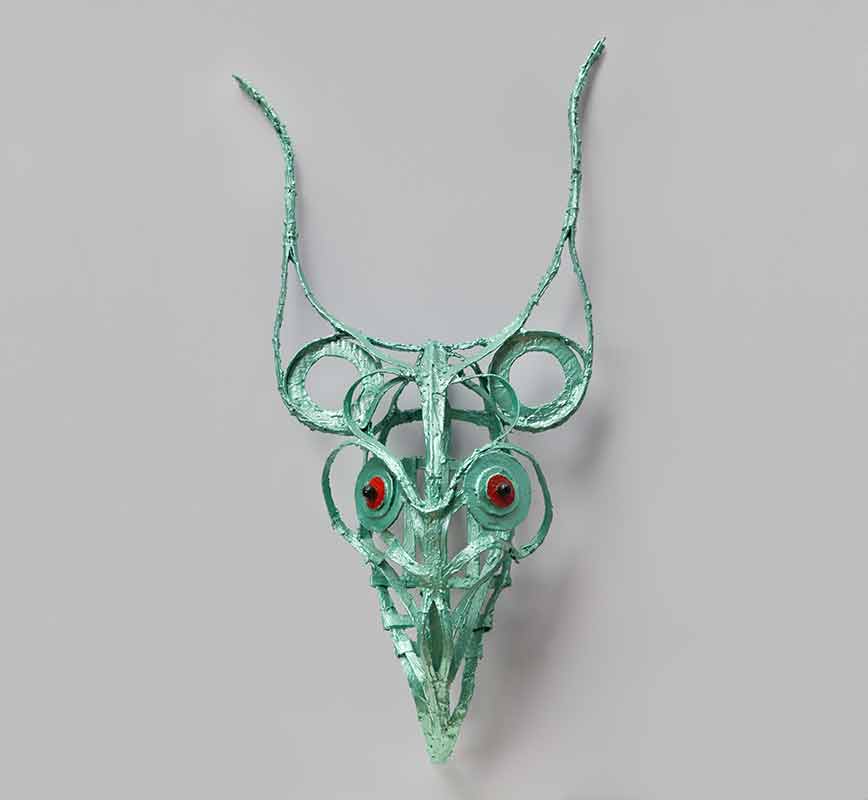
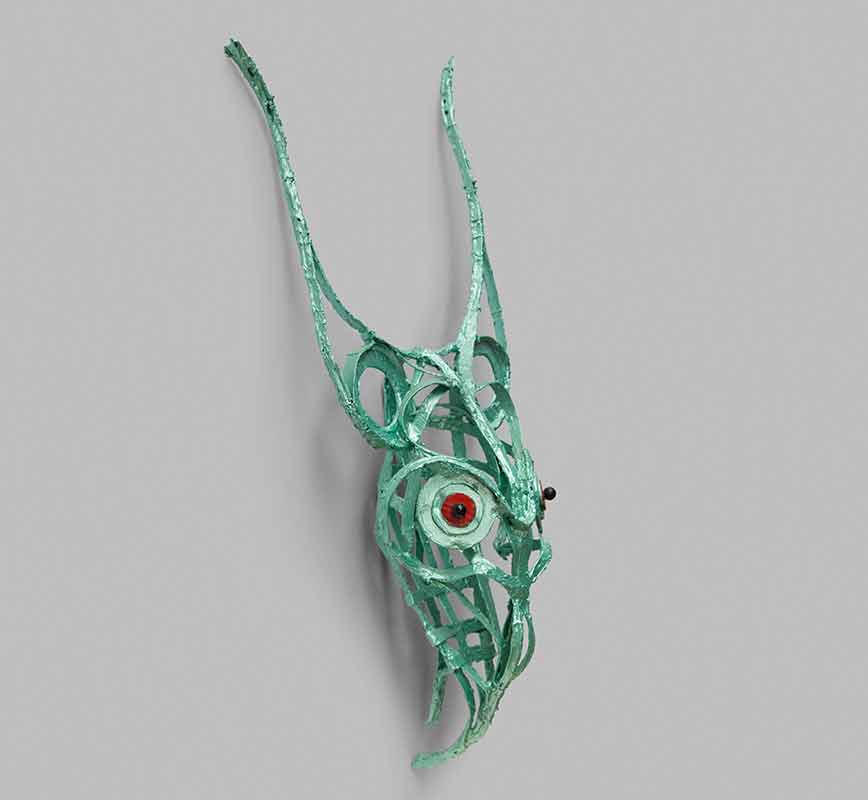
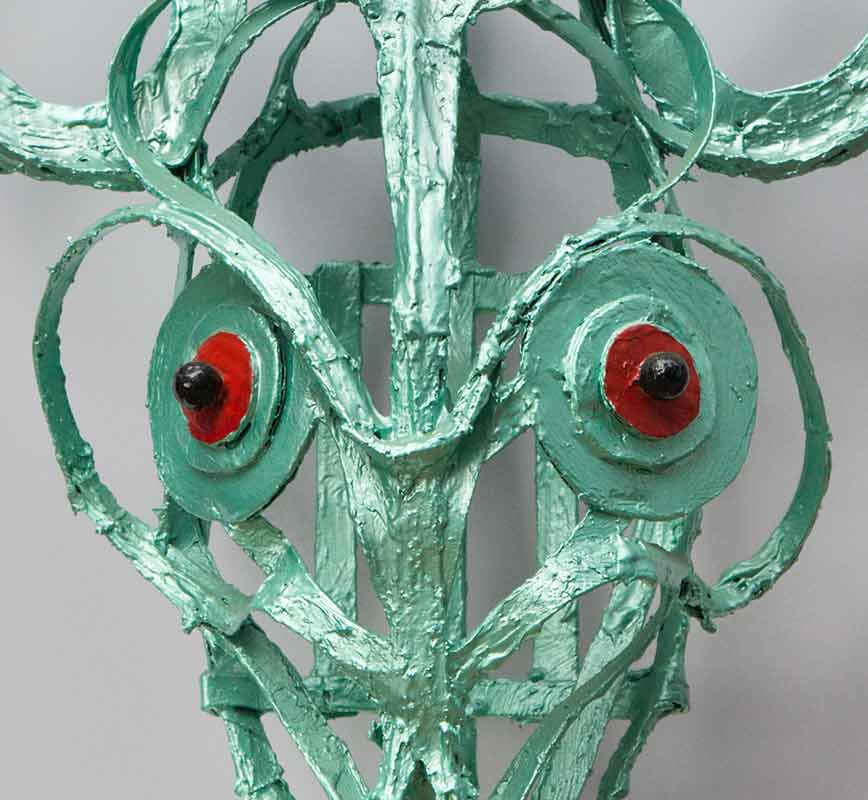
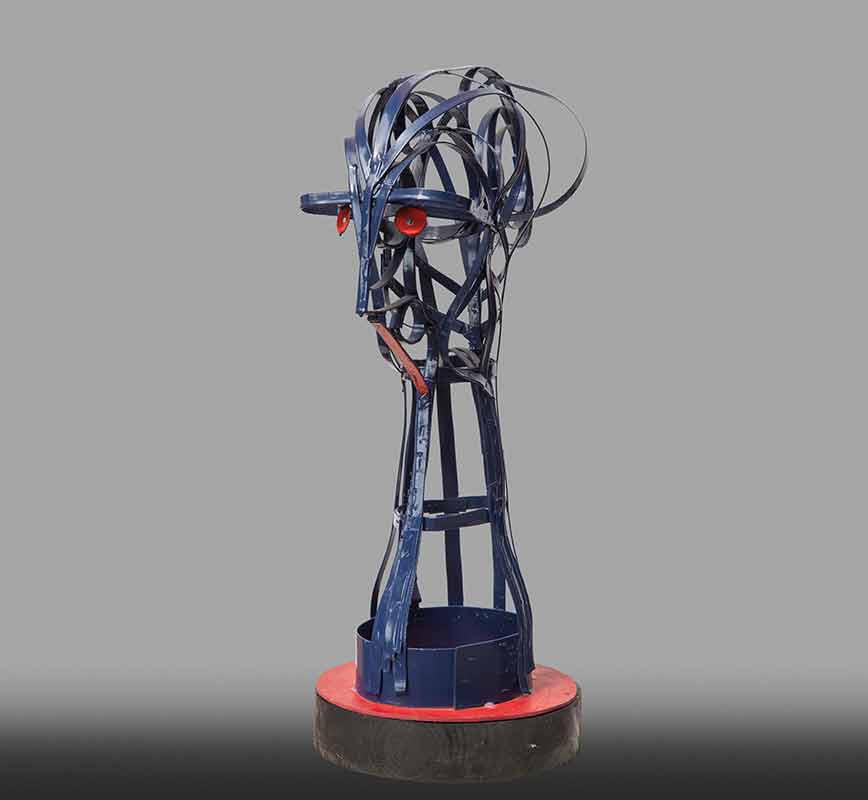
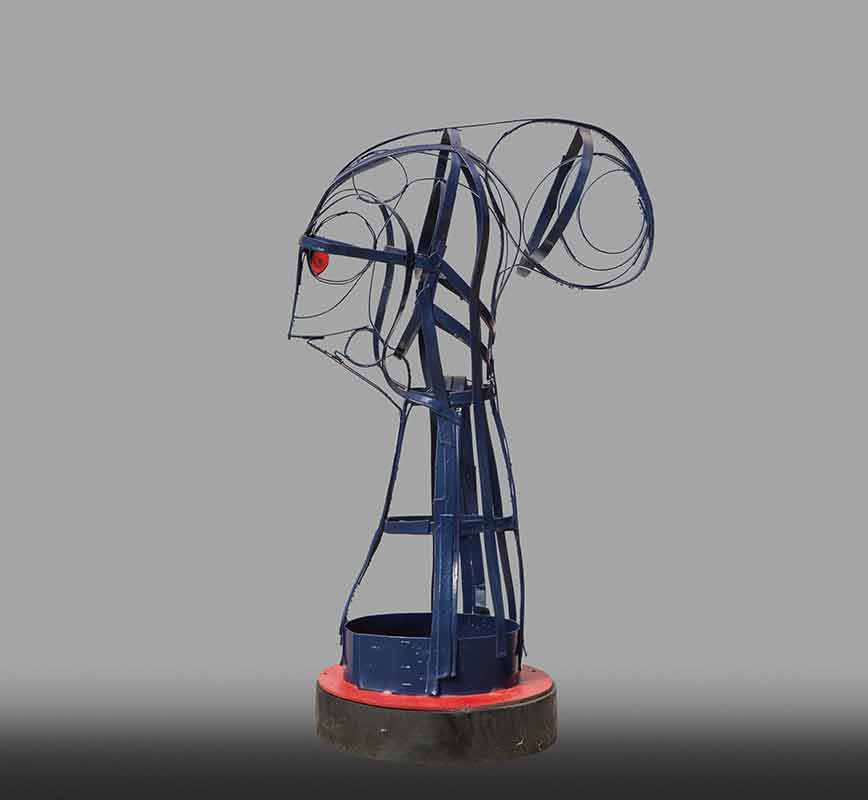
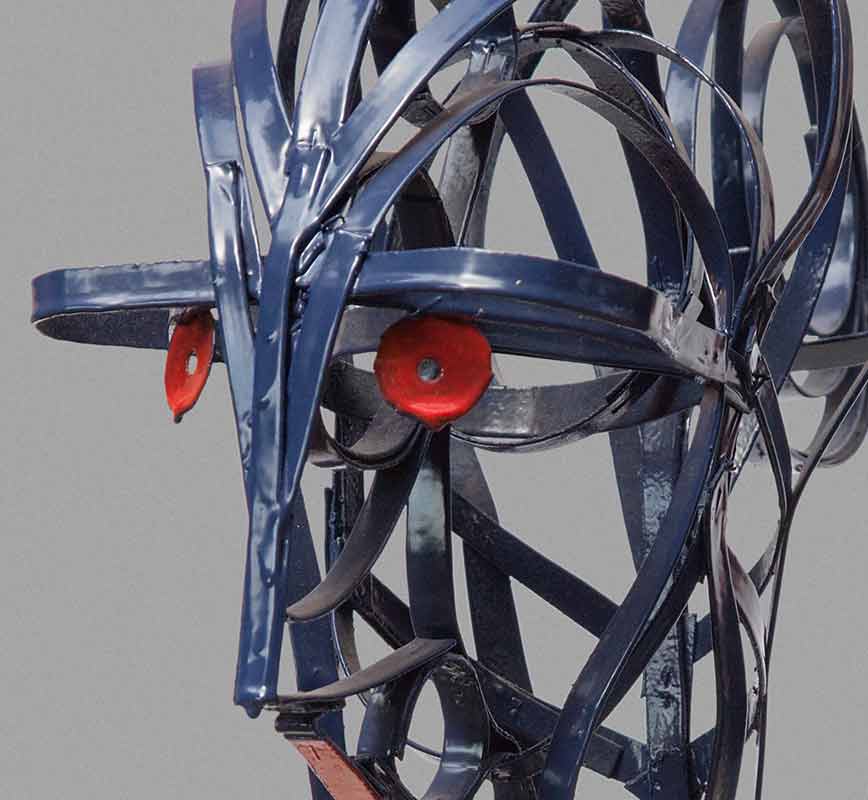
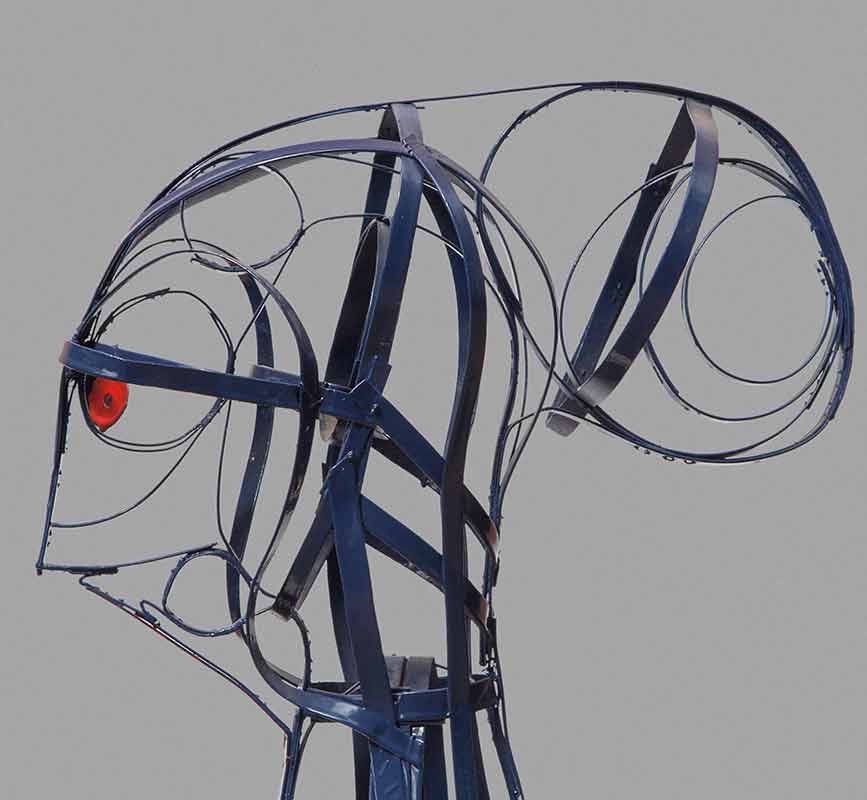
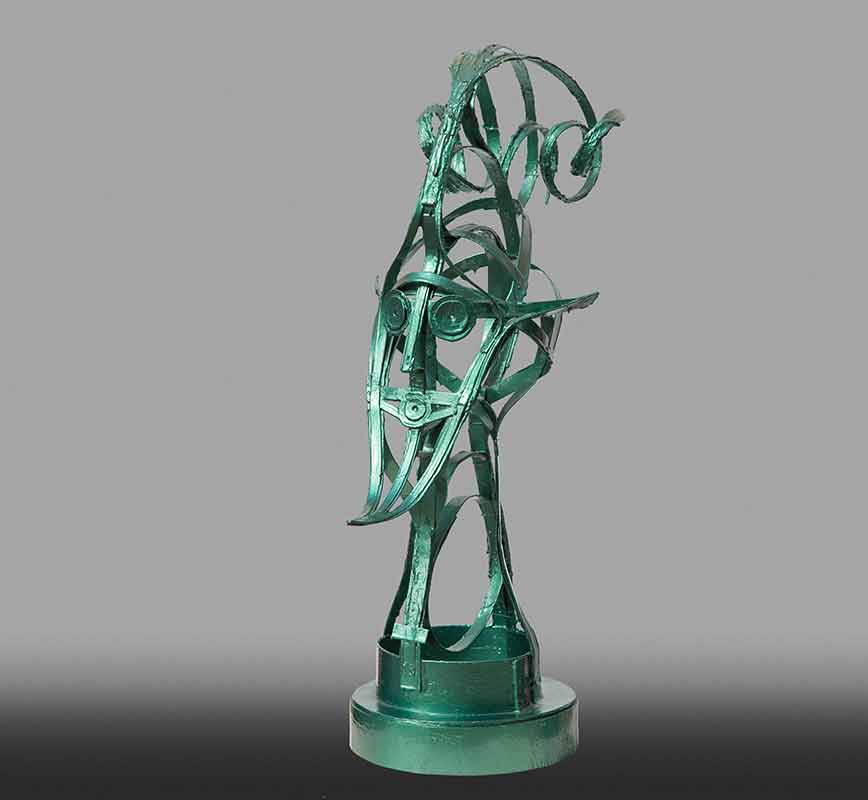
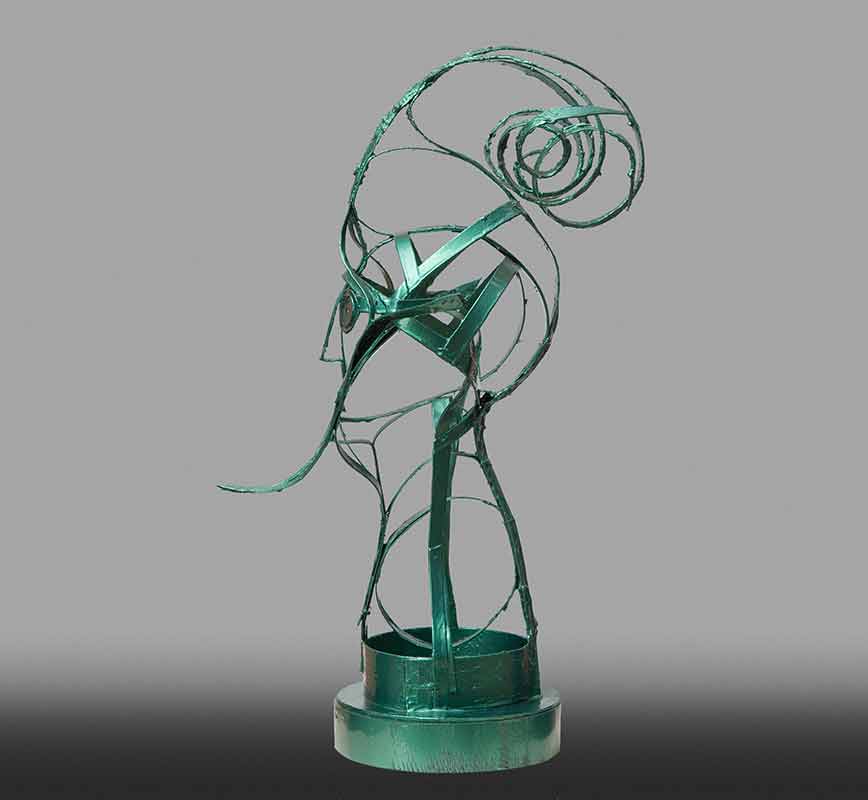
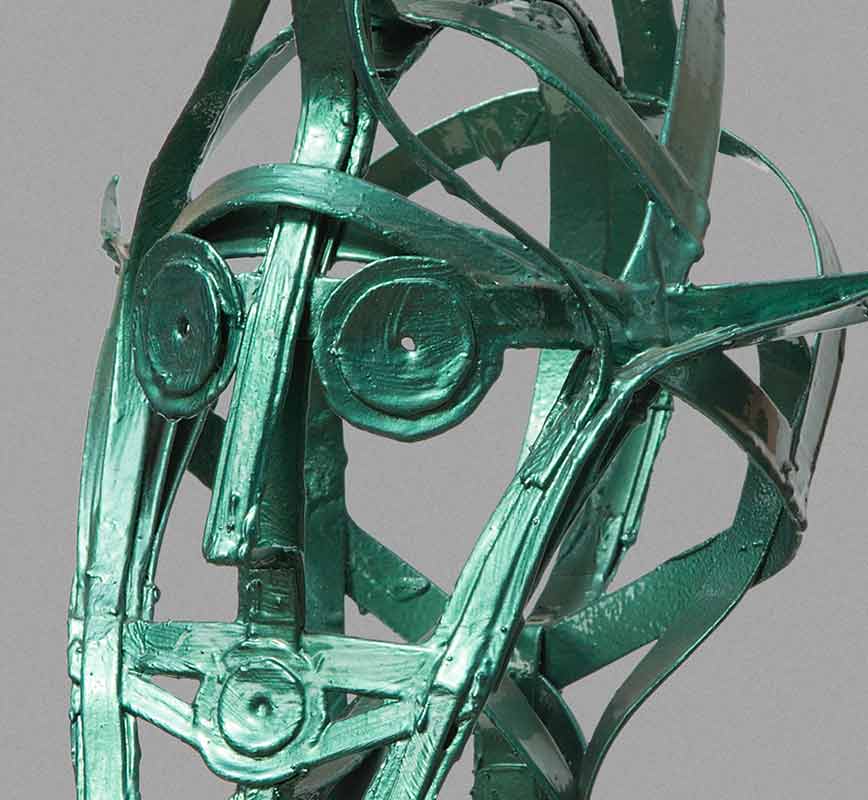
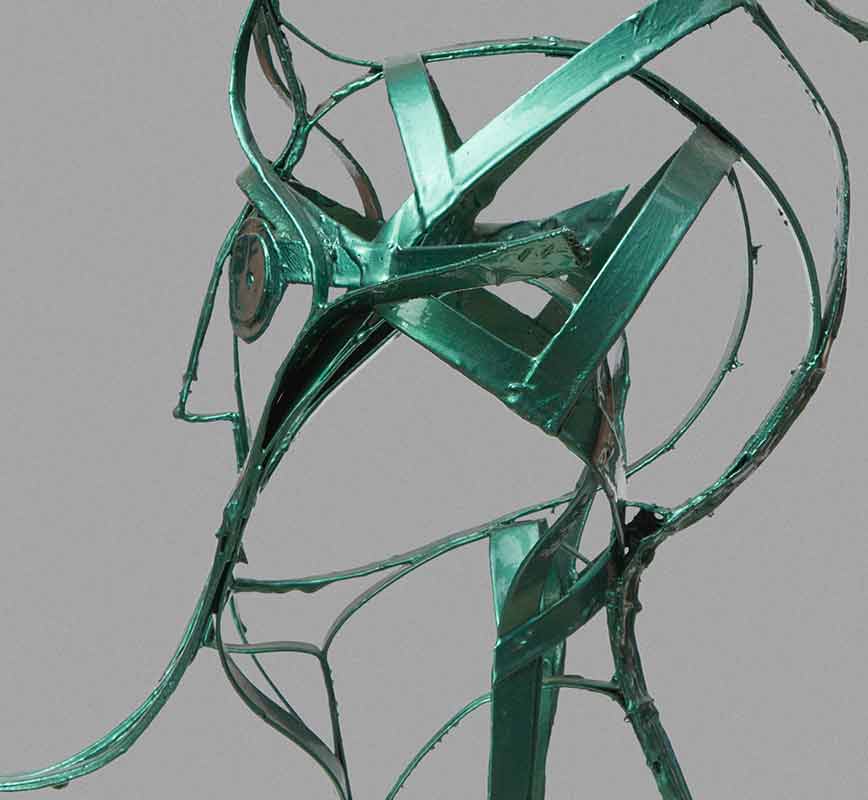
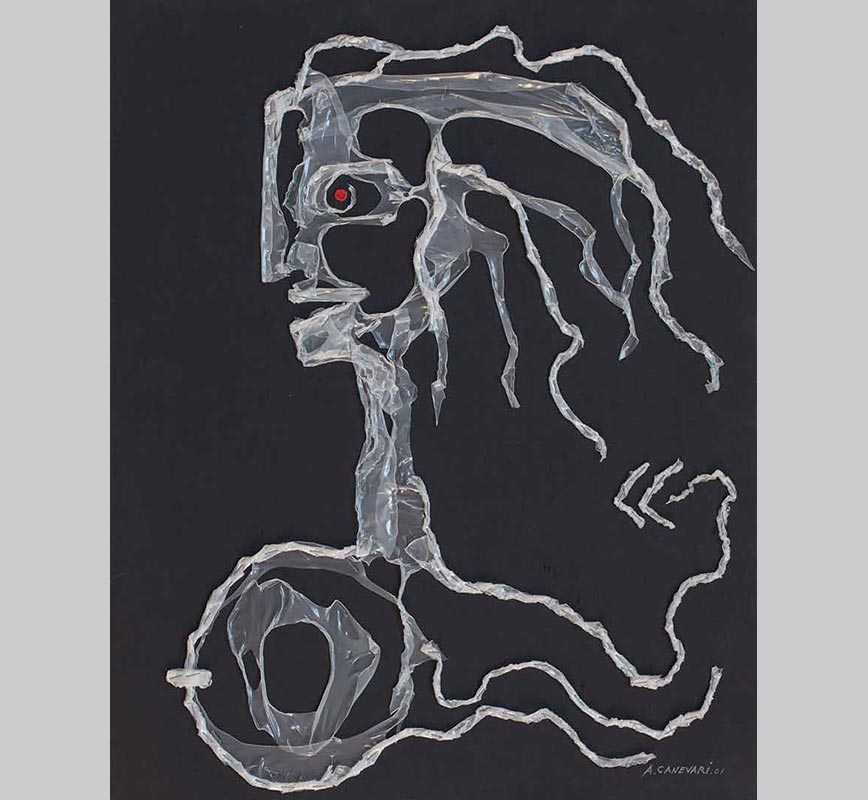
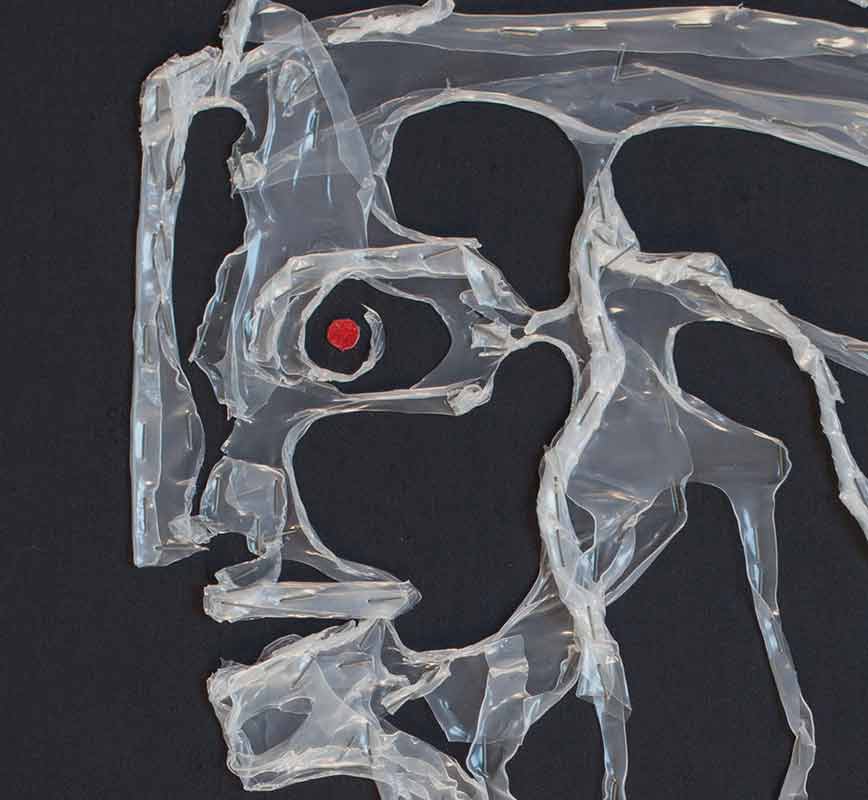
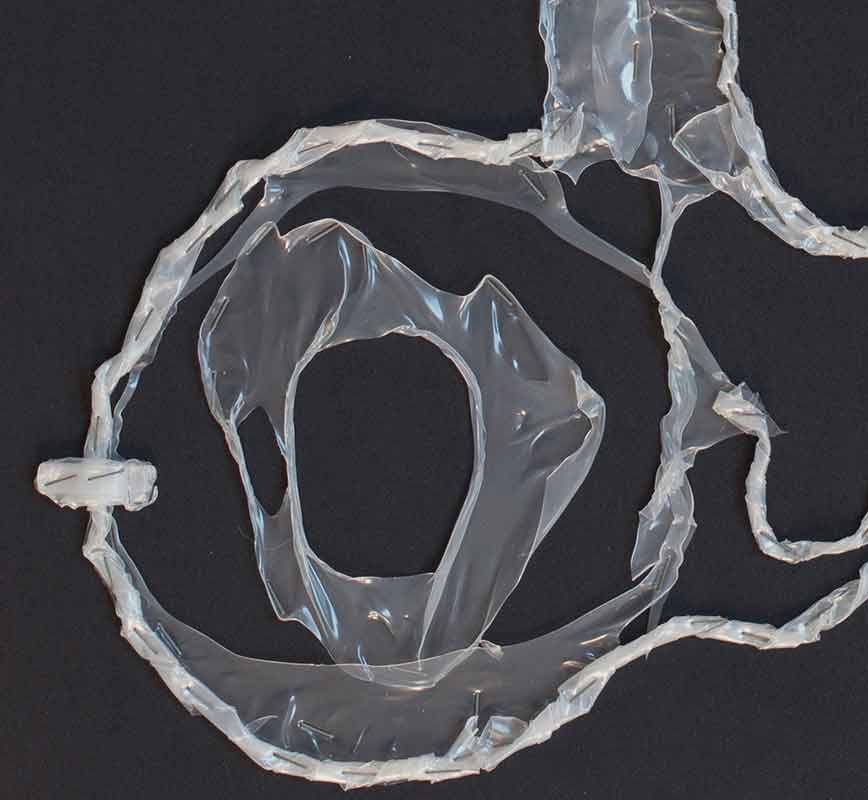
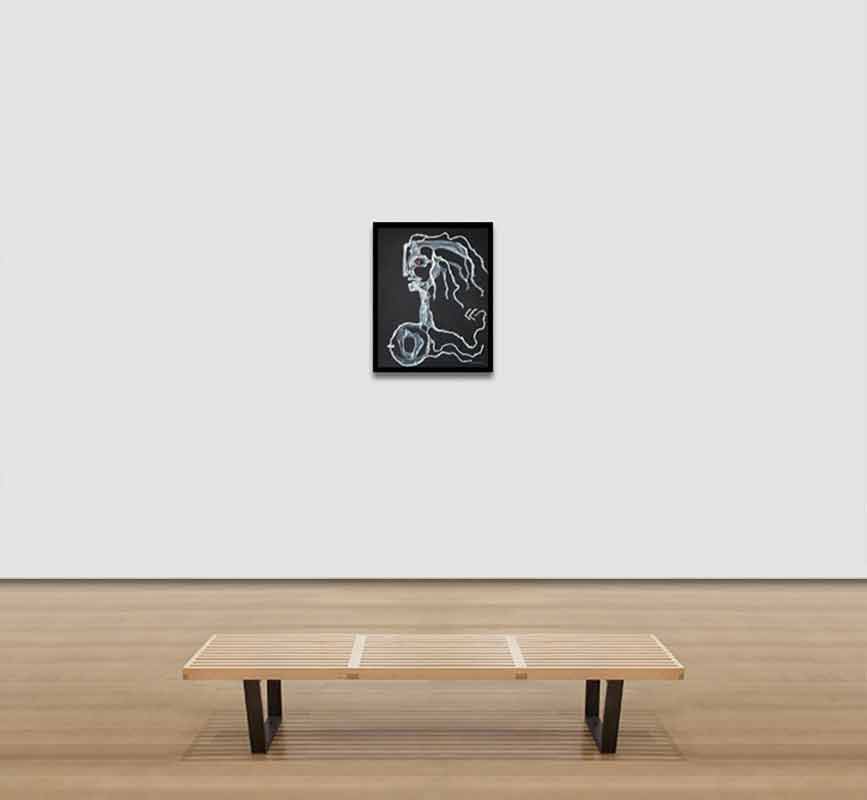
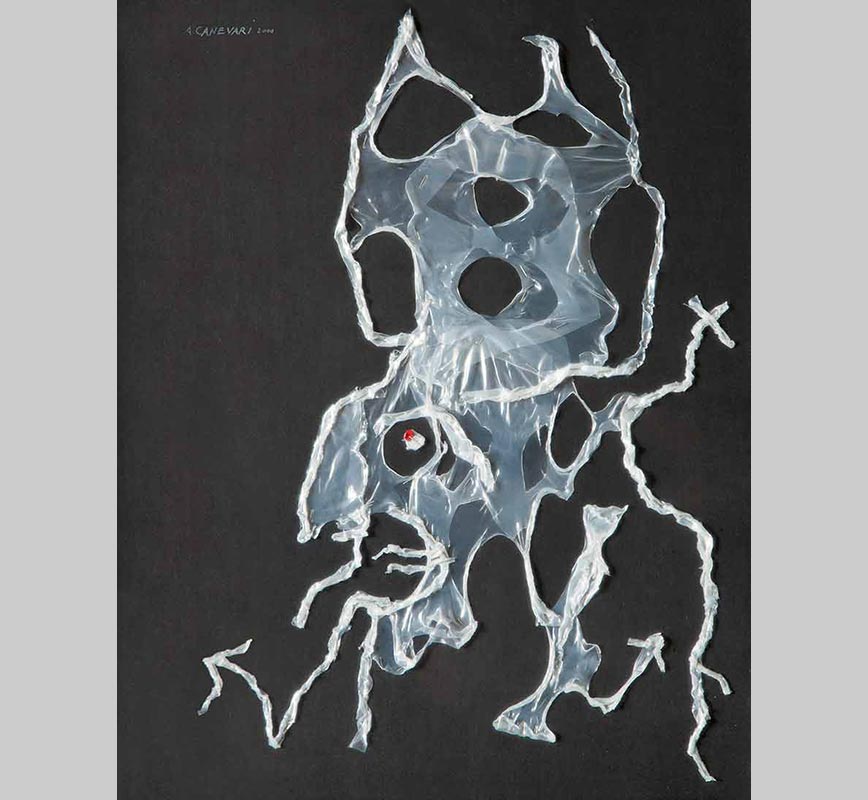
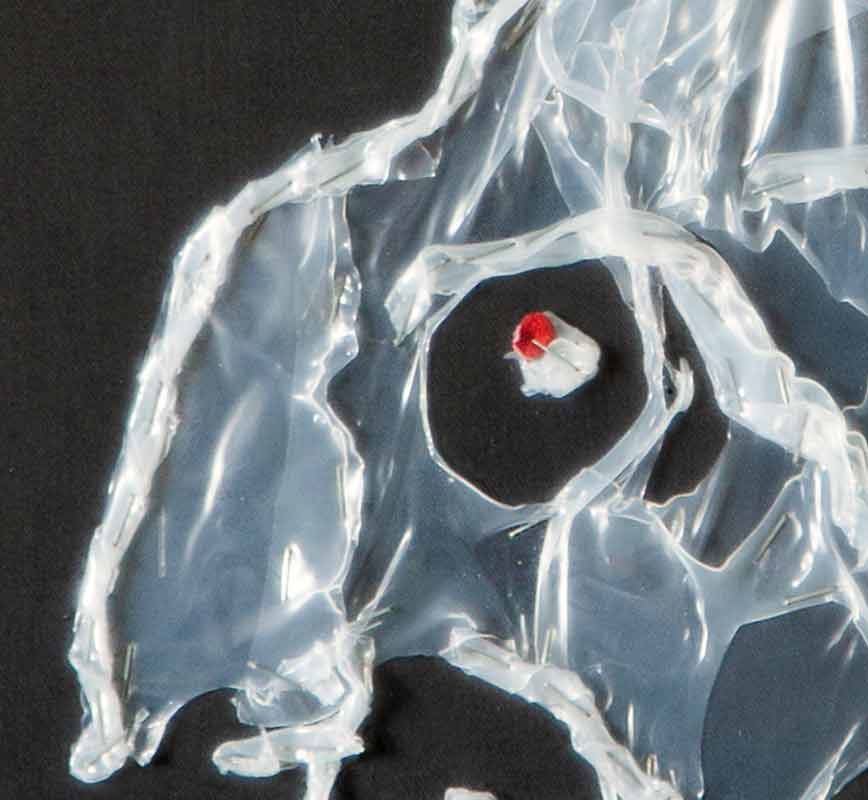
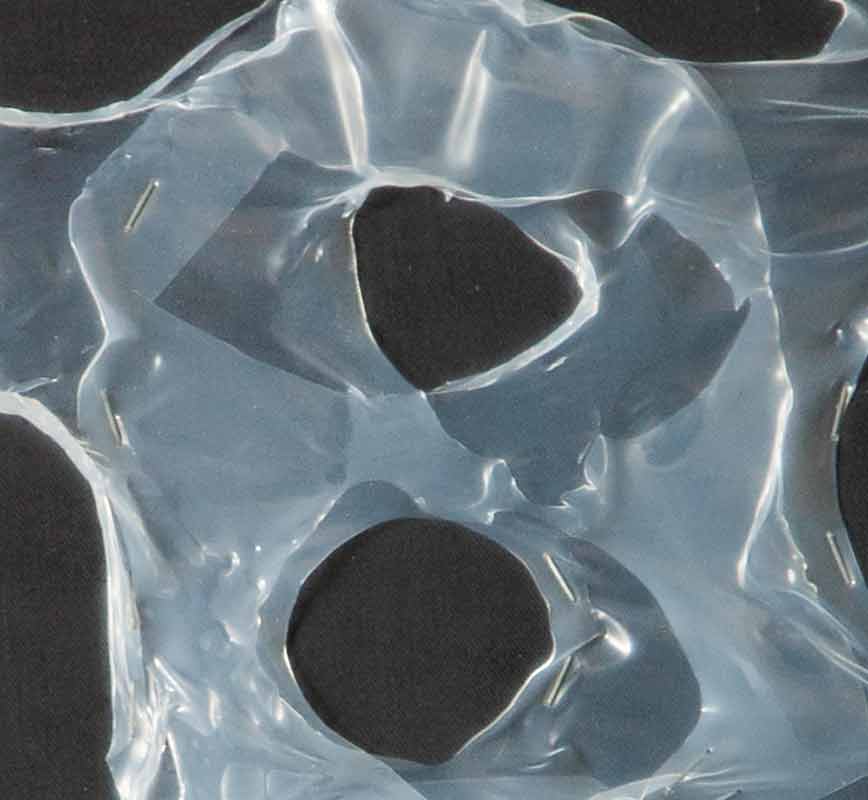
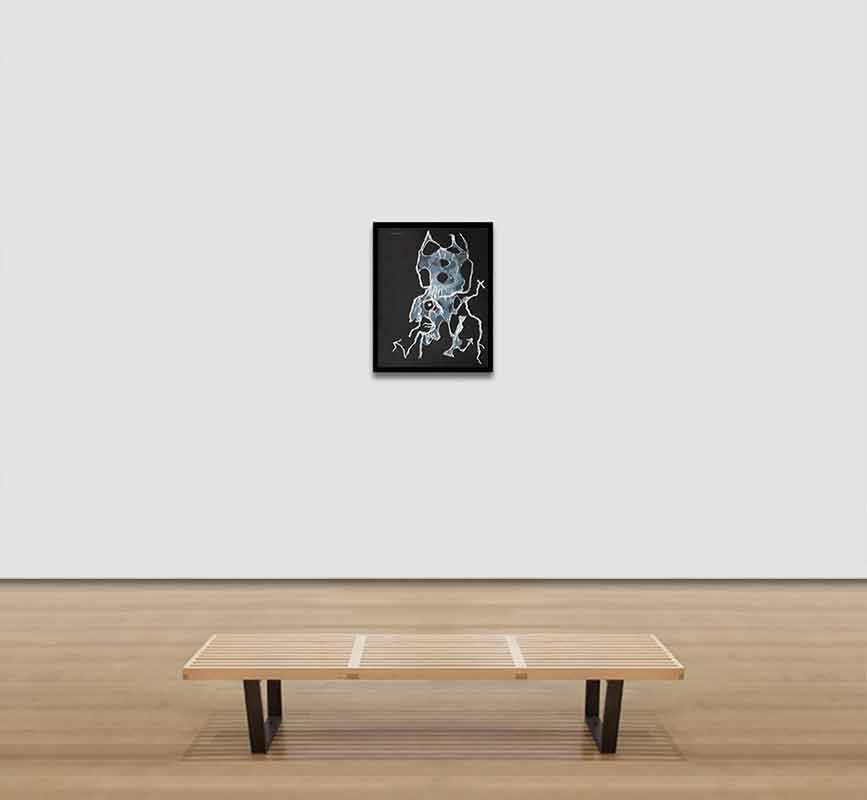
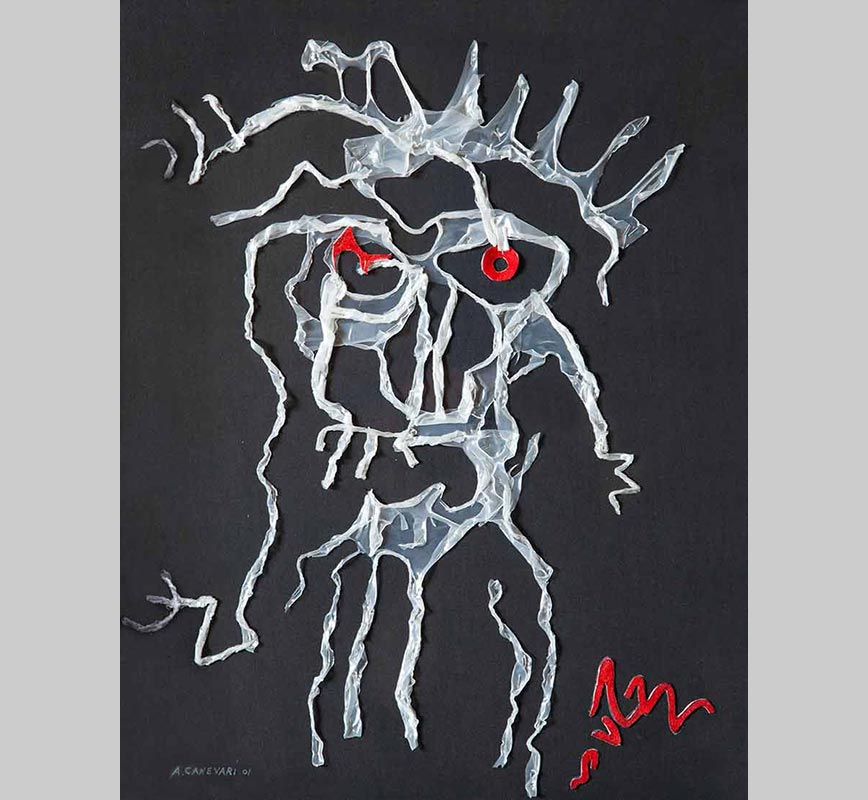
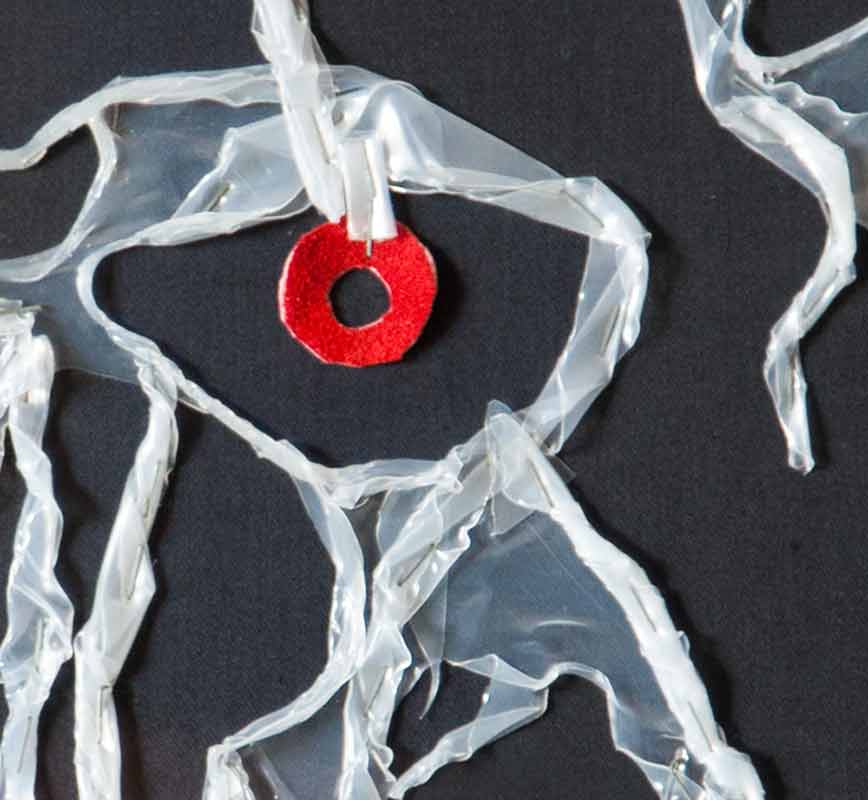
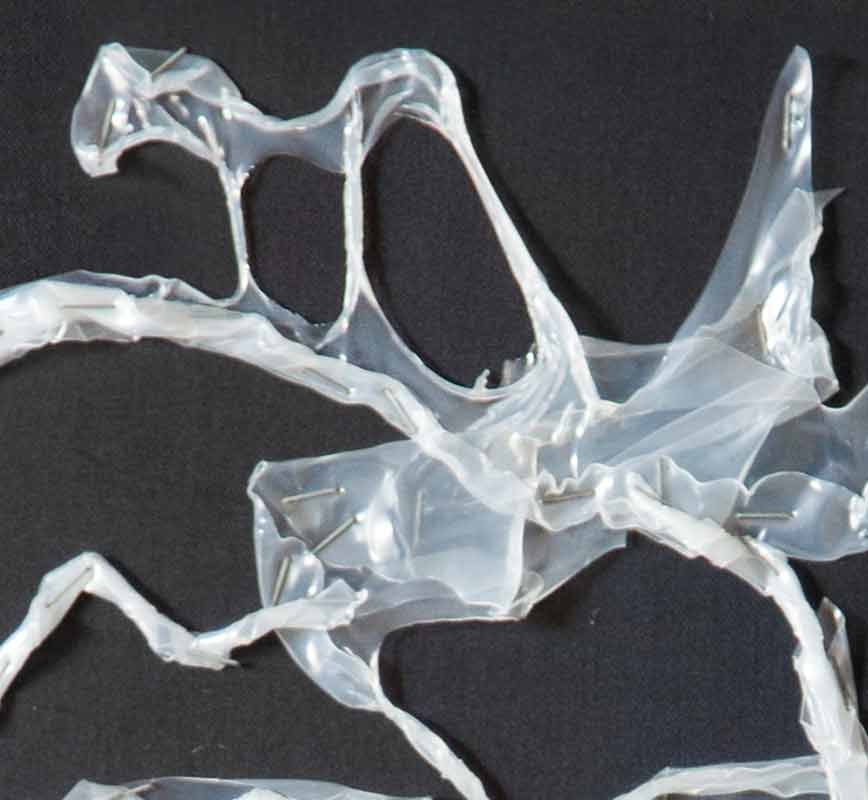
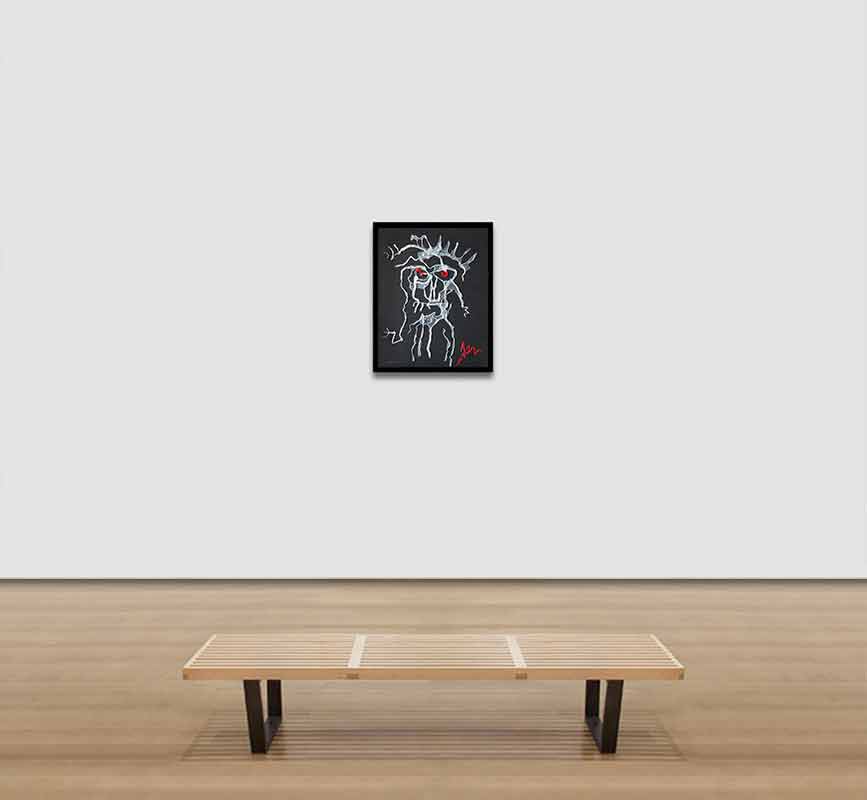
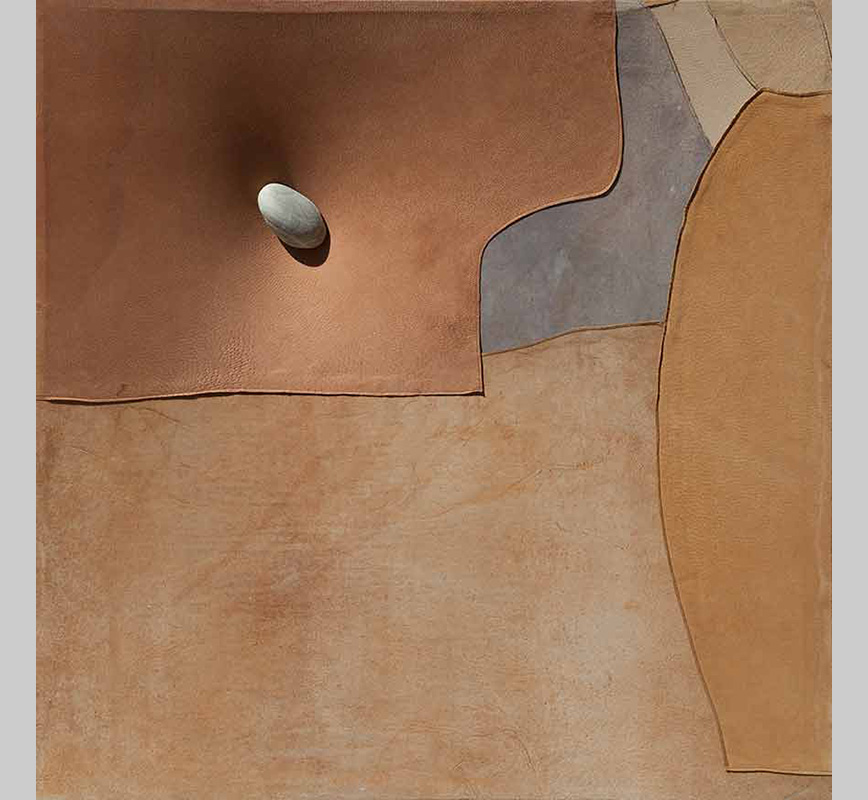
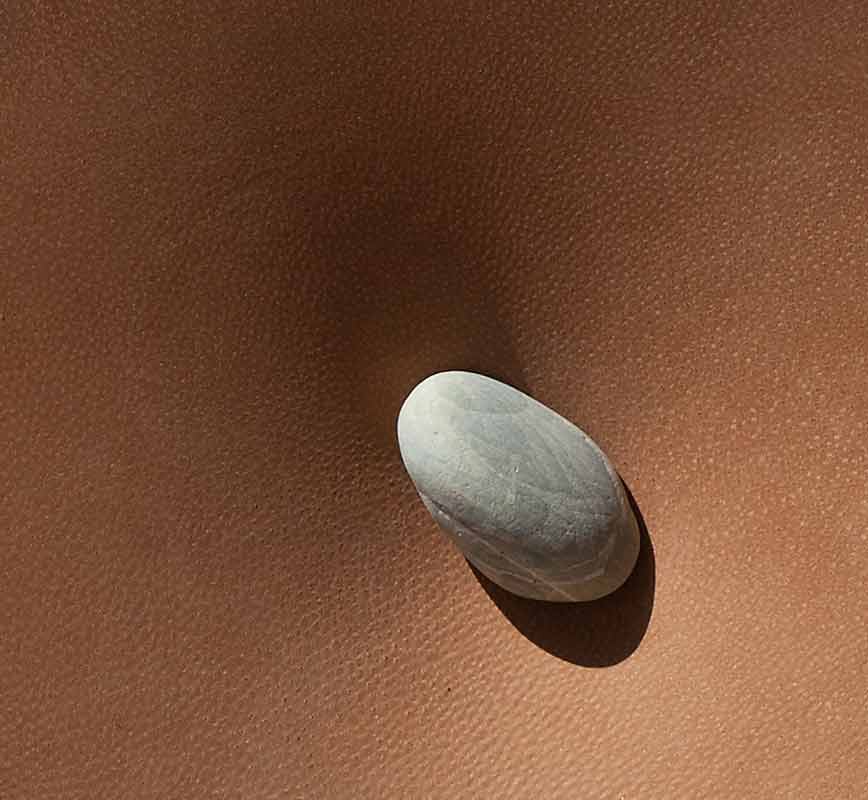
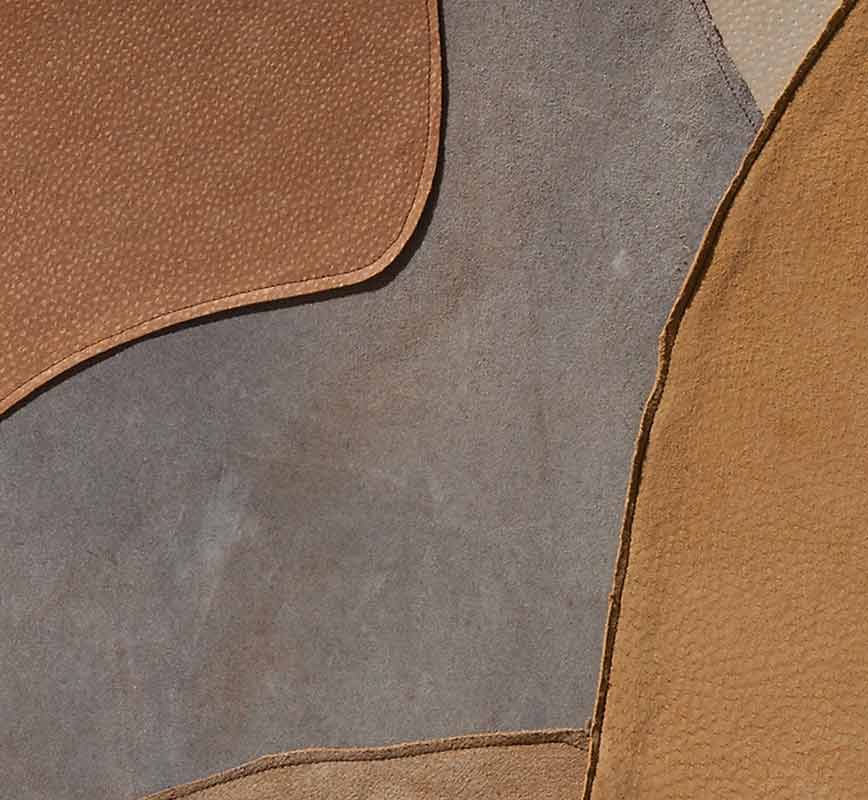
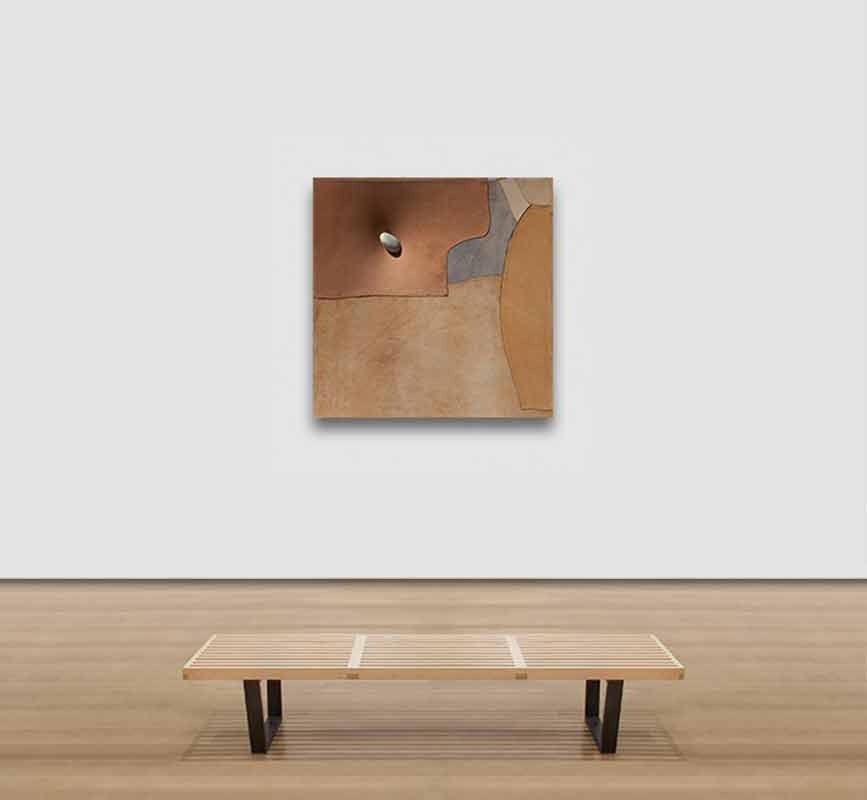
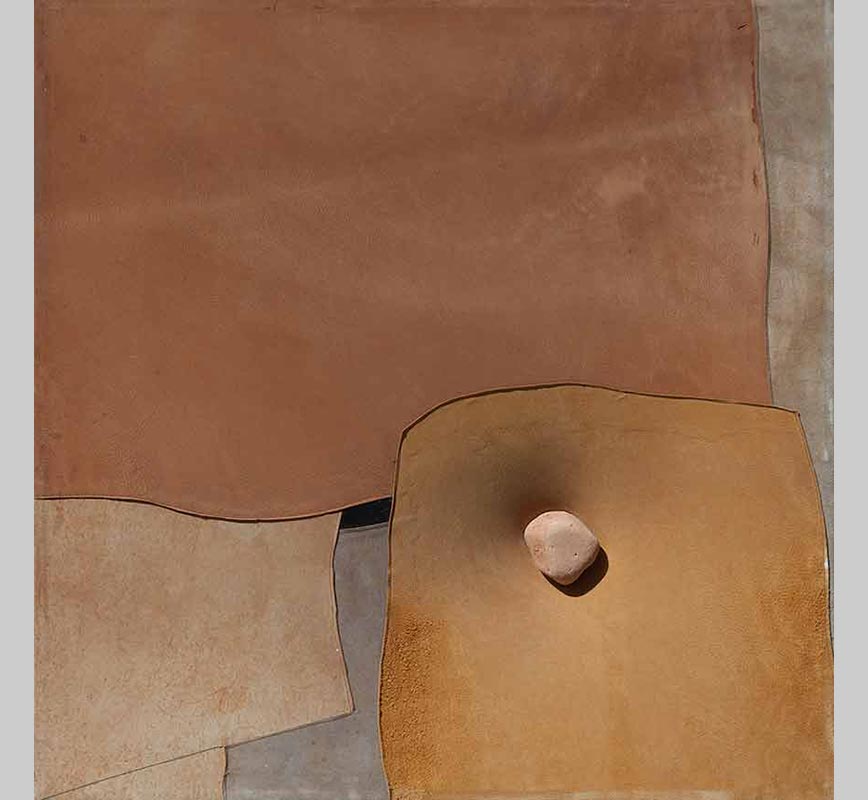
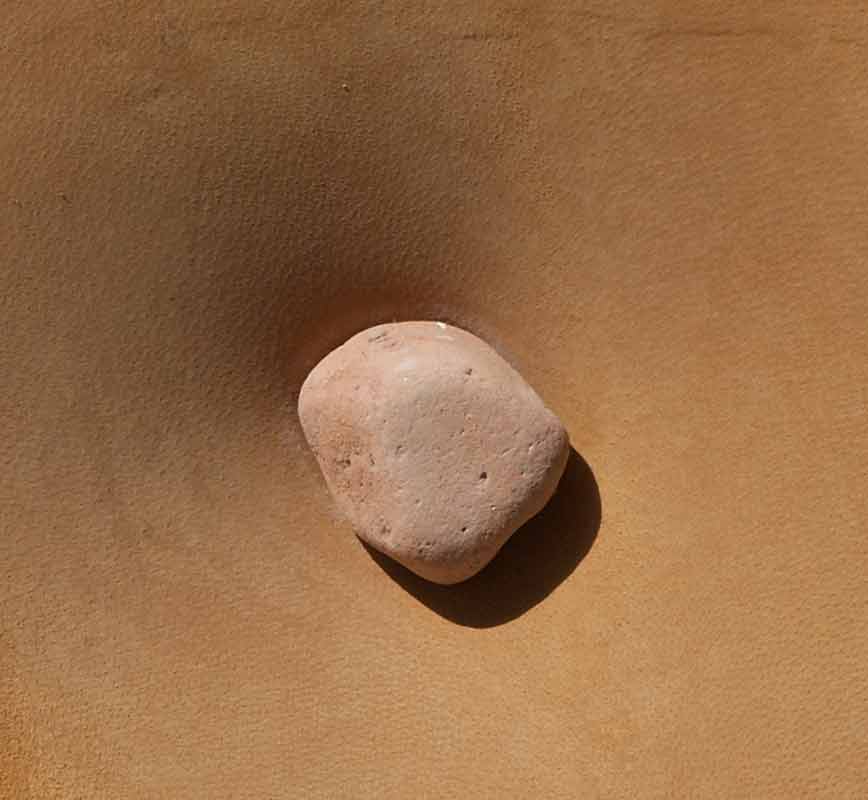
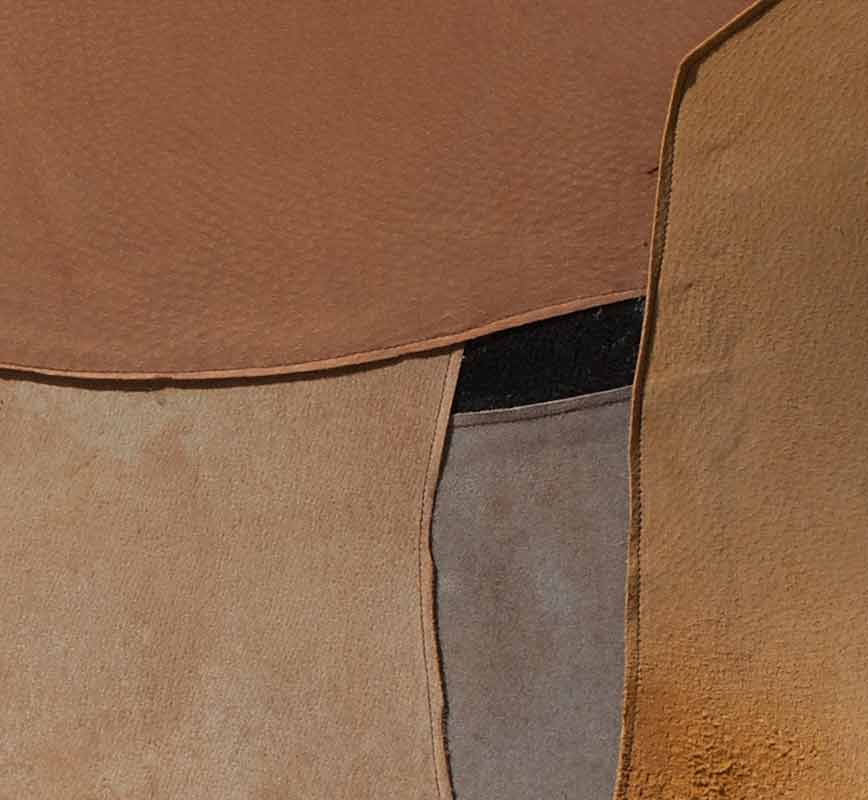
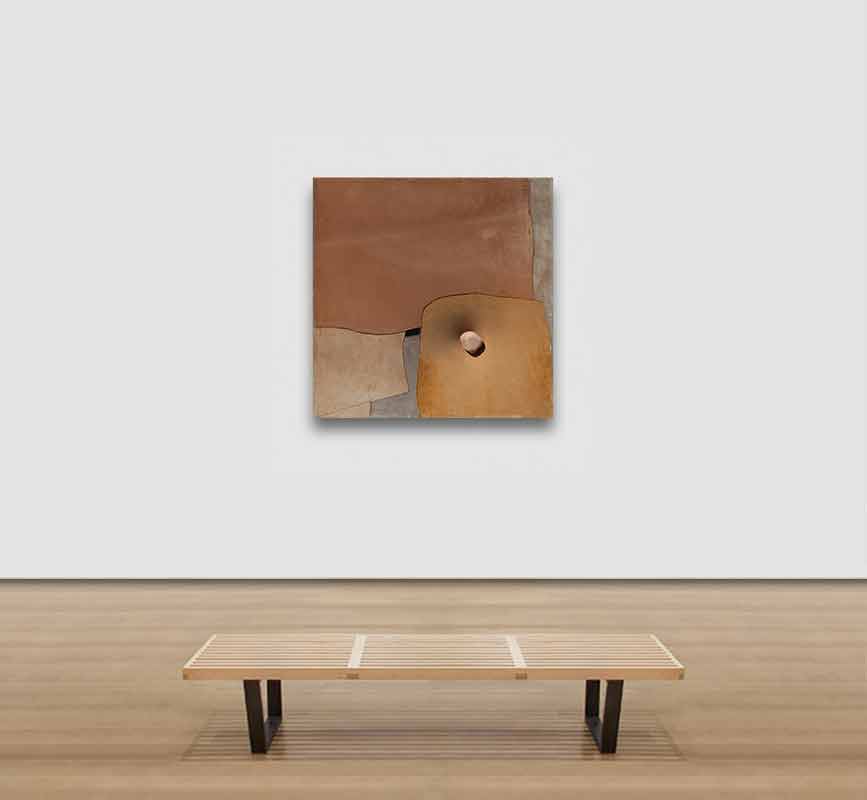
Inside the artist lives the intuition that together with his inner self can create forms able to express it. A kind of language that, starting from an ancestral culture, can be articulated in an expression, shaping its own history. He will lead back every inspiration to that peculiar interpretative fashion, the only one he can use to read and communicate his ideas and his view of the world around him.
Everything he can capture from his life will be replaced in that perimeter, in that space. Every thought like a single stone will be picked up, interpreted, decoded and placed in the wall of creative construction, like fragments reborn to a new order. Art is the invention capable to manifest, through its continual metamorphose, the never ending process of creativity, the never ending process of life.
Angelo Canevari is an Italian sculptor from a long lineage of artists active in Rome since the 17th century. His father was a Futuristic painter famous for his large-scale mosaics, and his uncle was a sculptor known for his monumental sculptures in marble and bronze. Canevari's artistic development took place in a studio atmosphere, learning all aspects of classical techniques like in a Renaissance Bottega. However, he concentrated primarily on lost wax bronze casting, which has been the main mean of expression in all his carrier. Among his most celebrated cast bronze sculptures is the series of the Canopi, anthropomorphic sculptures reminiscent of sacred vases of the ancient Etruscan civilization. Among the several public commissions of Canevari's work stands out the monumental doors of Belluno's cathedral and several coins for the Vatican Mint. Canevari's art was non-confined to bronze sculpture. Still, it used several media, like plastic or leather, and techniques, like etching and dry point, to create work inspired by themes of classical literature, mythology, and ancient civilizations, with a focus on the human figure. He also developed a lifelong theatrical collaboration with Italian writer Andrea Camilleri.